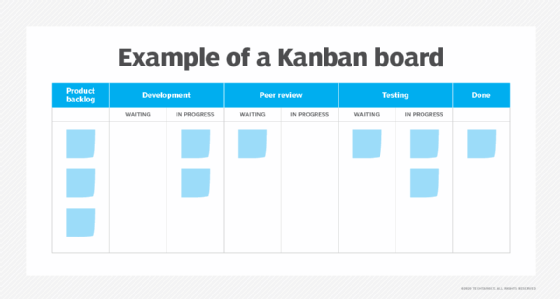
Getty Images
Compare Azure DevOps vs. Jira for IT ops project management
Azure DevOps and Jira can both be effective project management tools for software development and IT ops teams, but the two differ in terms of benefits, features and limitations.
As more organizations shift to a DevOps approach, IT teams are increasingly turning to project management software to streamline software development and deployment. Azure DevOps and Jira are two popular project management tools for DevOps teams, and although the two share some similar features, they have different core aims and use cases.
Those already using Microsoft Azure are likely to find Azure DevOps a more integrated option that's ready to go out of the box. Jira, on the other hand, is a more flexible tool that lends itself to a wider range of use cases and IT environments. Compare the pros and cons of Azure DevOps vs. Jira to decide which one is the right fit for your organization.
What is Azure DevOps?
Microsoft's Azure DevOps platform consists of many components and is marketed as an all-in-one offering for software delivery and project management. It's a complete development lifecycle tool that offers the functionalities most large Microsoft environments need.
Azure DevOps benefits
For those already using Azure infrastructure or working in a Microsoft-only environment, Azure DevOps is a quick and frictionless experience.
It's also highly optimized for organizations using the DevOps methodology. For example, it takes only a few clicks to stand up a basic CI/CD pipeline in Azure DevOps, which can speed up deployments.
Likewise, users familiar with Scrum or Kanban can effectively manage work on software features and defects using Azure Boards to track and plan teams' tasks and issues. Boards are included in the base Azure DevOps offering.

It's also useful to have everything contained in one environment. The ability to create a pipeline that directly interfaces with Azure and uses key stores and secrets within Azure can simplify deployments.
Azure DevOps drawbacks
IT teams can run multiple projects in Azure DevOps, including free personal projects. However, this feature's usefulness is hampered by limitations such as pipeline execution limits.
Azure DevOps is designed for enterprise users. For some larger companies, that might make it an easy decision. For smaller companies or individual developers, however, it's not always the best choice.
And even for larger groups of enterprise users, Azure DevOps can still be quite complex and relatively expensive -- up to $52 per user per month at time of publication, including the test planning side of Azure DevOps. The price can go up further if developers want to use external integrations, such as GitHub and other version control tools, which add to the overall cost.
What is Jira?
Atlassian's Jira platform is primarily a software tool for project management in Agile environments. IT ops and development teams can use Jira to track and manage software releases.
Jira benefits
Jira supports multiple methodologies, including Kanban and Scrum. The tool also gives developers the flexibility to choose whatever tools they prefer, rather than forcing a specific tool onto users, and supports various Git providers.
Another of Jira's strengths is its reporting tools for project management, which enable DevOps teams to monitor software processes with reporting and dashboards. Jira also has a built-in ticketing system for support request tracking.
Similar to Azure DevOps, several Jira pricing packages are available depending on requirements. Jira also offers discounts for long-term subscriptions.
Jira drawbacks
Jira has started to fall out of favor due to its relatively high cost and Atlassian's aggressive attempts to move on-premises users to the company's SaaS offerings.
Depending on the situation, the SaaS offering could be the right choice; it requires less setup and Atlassian oversees all management activity. But if the project management side isn't used appropriately, it's a lot of cost for not much gain.
Using Azure DevOps and Jira together
Users also have the option of integrating Azure Pipelines and Jira to provide more visibility into the entire development lifecycle.
By combining the two, IT teams can move between systems to better understand and track software releases. Both platforms have an array of additional plugins that IT teams can install to extend the functionality of the base system.






